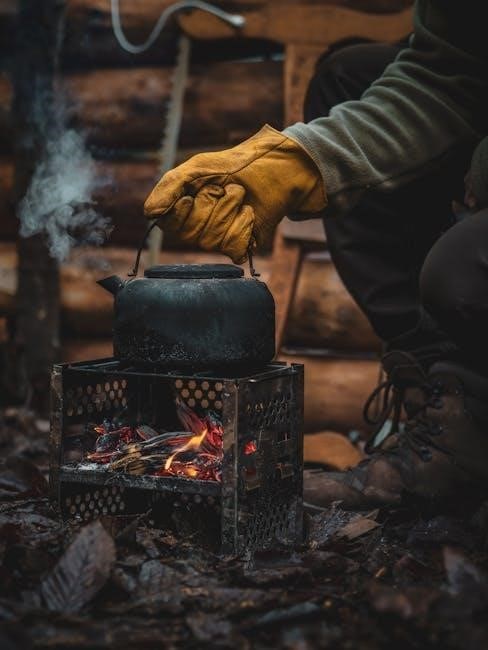Costway 10×30 Tent: Overview
The Costway 10×30 tent provides a spacious outdoor shelter, ideal for various events like weddings and parties․ It offers ample room for dining and activities, accommodating numerous people․ Its robust construction ensures reliability, making it a practical choice for extending outdoor spaces․
Identifying Parts and Components
Before commencing the assembly of your Costway 10×30 tent, it is crucial to meticulously identify all parts and components included in the packaging․ Typically, you will find a powder-coated steel frame, designed for durability and stability․ The frame consists of multiple interconnected poles, connectors, and footings․
The canopy top, usually crafted from Oxford polyester fiber, provides shelter from the elements․ Sidewalls, some models feature removable options, offer additional protection and privacy․ Stakes and ropes are essential for securing the tent to the ground, ensuring stability against wind․ Buckles and Velcro fasteners aid in attaching the canopy and sidewalls to the frame․
Refer to the included instruction manual to cross-verify the parts list and familiarize yourself with each component’s function․ This proactive step will streamline the assembly process and prevent potential confusion or missing parts later on․ Keep all components organized and readily accessible for a smooth setup experience․

Initial Setup: Frame Assembly
The initial setup of your Costway 10×30 tent involves assembling the frame․ Begin by laying out all the frame components on a flat, clean surface․ Connect the poles using the provided connectors, ensuring each connection is secure․ Refer to the instruction manual for the specific order and method of connecting the frame pieces․
Start by constructing the base of the frame, forming the perimeter of the tent․ Then, assemble the roof supports, connecting them to the base structure․ Pay close attention to the locking mechanisms on the connectors, ensuring they are properly engaged to provide a stable framework․
With the assistance of a partner, carefully raise the assembled frame․ Ensure that the frame is locked in place before proceeding․ The frame should be fully extended and stable before moving on to the next step․ Double-check all connections and locking mechanisms to guarantee a secure and sturdy structure for your tent․
Canopy Installation
Once the frame is fully assembled, the next step is installing the canopy․ Carefully unfold the canopy fabric and position it over the assembled frame․ Ensure the canopy is centered to provide equal coverage on all sides․ With the help of a partner, lift the canopy and drape it over the frame․
Secure the canopy to the frame using the provided hook and loop fasteners or other attachment mechanisms․ Start by attaching the canopy at the corners, ensuring a snug fit․ Then, proceed to secure the canopy along the sides, evenly distributing the tension․
Make sure the canopy is taut and wrinkle-free for a professional look and optimal performance․ Check that all attachment points are securely fastened to prevent the canopy from shifting or detaching during use․ Proper canopy installation is crucial for weather resistance and the overall stability of the tent․
Sidewall Attachment
After the canopy is securely in place, the next step involves attaching the sidewalls, if included with your Costway 10×30 tent model․ These sidewalls provide added protection from the elements and increased privacy for your event․ Begin by identifying the correct orientation of each sidewall panel․
Most Costway tent sidewalls attach using hook and loop fasteners, zippers, or clips that align with corresponding points on the canopy and frame․ Starting at one corner, carefully attach the sidewall to the canopy, ensuring a snug and even fit․ Work your way around the tent, connecting each sidewall panel in sequence․
Pay close attention to any door or window openings, ensuring they are properly aligned and functional․ Once all sidewalls are attached, double-check that they are securely fastened and evenly tensioned․ Properly installed sidewalls enhance the tent’s weather resistance and create a more enclosed and comfortable space․

Securing the Tent: Stakes and Ropes
To ensure stability, use stakes and ropes․ Stakes anchor the tent to the ground, while ropes provide enhanced support․ Employ both methods to withstand wind and prevent tent collapse, following included instructions carefully for optimal results․
Using Stakes for Ground Anchoring
Ground anchoring with stakes is crucial for securing the Costway 10×30 tent, preventing it from shifting or collapsing, especially in windy conditions․ Begin by identifying the stake loops or anchor points around the tent’s base․ Position each stake at a 45-degree angle away from the tent, driving it firmly into the ground using a hammer or mallet․ Ensure each stake is securely embedded, leaving only the loop exposed․
Distribute the stakes evenly around the perimeter to balance the tension․ For softer ground, consider using longer or wider stakes for increased stability․ Regularly check the stakes during use, especially after periods of strong winds, to ensure they remain firmly in place․ Re-secure any loose stakes immediately․ Proper stake placement and maintenance are essential for the tent’s safety and longevity․ The tent typically comes with high-quality metal stakes designed to fix the canopy tightly to the ground․
Remember to avoid flammable materials near the tent and never use fire inside․ By diligently following these staking procedures, you can confidently anchor your Costway 10×30 tent, providing a safe and secure environment for your event․
Utilizing Ropes for Enhanced Stability
Enhance the stability of your Costway 10×30 tent by utilizing ropes, especially in areas prone to higher winds․ Locate the rope loops, typically found at the corners and along the sides of the tent’s canopy․ Securely attach one end of each rope to these loops using reliable knots, such as a bowline or taut-line hitch, ensuring they won’t easily slip․ Extend the ropes outwards from the tent at a 45-degree angle, mirroring the stake placement․
Firmly anchor the free ends of the ropes to the ground using additional stakes․ Adjust the tension of each rope to create a balanced and taut structure․ The goal is to distribute the wind load evenly across the tent frame, minimizing stress on any single point․ Regularly inspect the ropes and knots for wear and tear, replacing them as needed․ Tighten the ropes periodically, as they may loosen over time due to stretching or changes in weather conditions․
By strategically employing ropes in conjunction with ground stakes, you can significantly increase the wind resistance and overall stability of your Costway 10×30 tent, ensuring a safe and enjoyable experience; Remember to always prioritize safety and exercise caution when setting up and securing the tent․
Safety Precautions During Setup
Prioritize safety during the setup of your Costway 10×30 tent to prevent accidents and injuries․ Always work with a partner to ensure stability and manage the tent’s size and weight․ Choose a clear, level area free from overhead obstructions like power lines and tree branches․ Check the weather forecast and avoid setting up the tent in high winds or inclement conditions․ Wear appropriate safety gear, including gloves and closed-toe shoes, to protect your hands and feet․
Carefully unpack all components and ensure you have all necessary parts before beginning assembly․ Familiarize yourself with the instructions beforehand․ Be cautious when handling metal poles and connectors, as they may have sharp edges․ Avoid overexertion and take breaks as needed to prevent fatigue․ When using stakes, be mindful of underground utilities and avoid hammering stakes into hard or rocky ground, which can cause them to bend or break․
Keep children and pets away from the setup area to prevent them from tripping or interfering with the process․ Never use flammable materials inside or near the tent․ By adhering to these safety precautions, you can ensure a smooth and incident-free setup experience for your Costway 10×30 tent․
Taking Down the Tent: Step-by-Step
Disassembling your Costway 10×30 tent requires a systematic approach to ensure efficiency and prevent damage․ Begin by removing all sidewalls, if attached, by unfastening any Velcro straps or clips․ Next, carefully detach the canopy top from the frame, folding it neatly as you go to avoid wrinkles․ Remove any stakes or ropes used to secure the tent to the ground, and store them safely․ With a partner, gently lower the tent frame, disengaging any locking mechanisms․
Collapse the frame section by section, being mindful of any pinch points․ Once the frame is fully collapsed, organize the poles and connectors for storage․ Wipe down all tent components with a dry cloth to remove any dirt or moisture before packing them away․ Store the tent in its original carrying bag or a suitable container to protect it from damage during transport and storage․
Double-check the area to ensure you have collected all parts and left no trace behind․ By following these steps carefully, you can efficiently disassemble your Costway 10×30 tent, extending its lifespan and ensuring it’s ready for your next event․ Remember to consult the instruction manual for any specific details related to your model․

Care and Maintenance Tips
To prolong the life of your Costway 10×30 tent, regular care and maintenance are essential․ After each use, thoroughly clean the canopy and sidewalls with a mild soap and water solution, removing any dirt or debris․ Ensure all parts are completely dry before storing to prevent mold and mildew growth․ Inspect the frame for any signs of damage, such as bends or cracks, and address them promptly․ Lubricate the joints and connectors periodically to maintain smooth operation․
When storing the tent, choose a cool, dry place away from direct sunlight․ Protect the fabric from pests by storing it in a sealed container or bag․ Avoid using harsh chemicals or abrasive cleaners on the tent, as these can damage the material․ Regularly check the stakes and ropes for wear and tear, replacing them as needed․
In windy conditions, ensure the tent is securely anchored to the ground using stakes and ropes․ Taking these proactive measures will not only keep your Costway 10×30 tent in good condition but also ensure it is ready for your next outdoor event․ Remember to consult the product manual for specific care instructions․

Troubleshooting Common Issues
Setting up a Costway 10×30 tent can sometimes present challenges․ One common issue is difficulty in frame assembly․ Ensure all poles are correctly aligned and securely connected․ If a pole seems stuck, avoid forcing it; instead, check for any obstructions or misalignments․ Another frequent problem involves canopy installation․ Make sure the canopy is properly oriented before attaching it to the frame, and that all corners are evenly secured to prevent sagging․
Sidewall attachment can also be tricky․ Verify that the sidewalls are correctly aligned with the tent frame and that all Velcro straps or zippers are properly fastened․ If the tent struggles to stay in place, double-check the stakes and ropes․ Ensure they are firmly anchored in the ground and properly tensioned․
In case of damage, such as tears in the canopy or broken poles, contact Costway customer support for replacement parts or repair options․ Always consult the product manual for detailed troubleshooting steps and safety precautions․ Addressing these issues promptly will ensure a safe and enjoyable experience with your Costway 10×30 tent․
